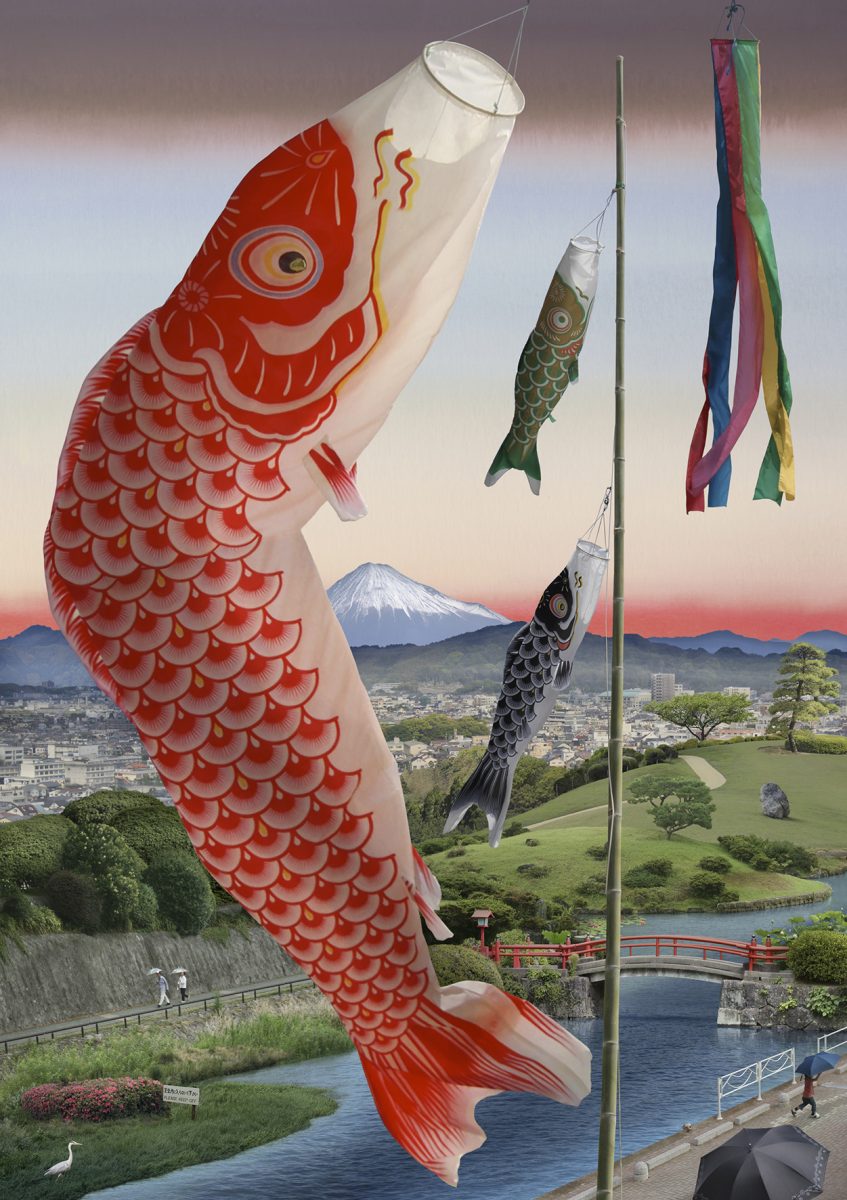
Even those unfamiliar with Japanese woodblock prints would recognise Hokusai’s The Great Wave off Kanagawa. It’s widely regarded as the most famous composition of the ukiyo-e genre – artworks that focus on fleeting beauty and momentary pleasures. Known for their vivid colours and dynamic formations, these artworks typically depict beautiful women, famous actors, and urban pleasures. Hiroshige, considered the last master of the tradition, went against the grain to produce artwork with the same focus as The Great Wave, where the landscape becomes the subject rather than the supporting element.
It was his work that became the basis for Emily Allchurch’s Tokyo Story – a set of twelve prints recently acquired by the British Museum. The collection mirrors Hiroshige’s One Hundred Famous Views of Edo, a renowned series depicting what is now modern-day Tokyo. Continuing her established technique of recreating old prints and paintings through a 21st-century lens, Emily meticulously assembled thousands of her own photographs into digital compositions that converse with the originals. Her collages are peppered with aspects of contemporary life, integrating new landmarks into the views depicted by Hiroshige.
By using photography as a medium, Emily’s work tends to evoke a sense of viewing a place frozen in time – similar to a documentary record. Her prints blur the line between illusion and reality, drawing the viewer into believing in the fictitious space she’s created. “People often say that the work looks three-dimensional, as though they could simply step into the scene,” Emily explained. “It makes the work seem very real and tangible.”
Gathering the media that went into Tokyo Story involved an intensive two weeks travelling around Tokyo and Kyoto, as an observer documenting her impressions of a place. Using Hiroshige’s original prints as her guide, she travelled between his chosen scenes on foot, allowing curiosity to guide her as much as her itinerary. Returning home from Japan with around 10,000 photos, she reorganised and digitally combined them in Adobe Photoshop – collating fragments together into a scene where the present is in conversation with the past.
Each artwork presents a different aspect of Japanese culture. Commenting on her work, Emily revealed that Tokyo Story 5: Cherry Blossom (after Hiroshige) “tells a story of good and bad fortune, with the fleeting beauty of a cherry blossom set against a homeless man that has fallen on hard times.” Tokyo Story 8: Temple (after Hiroshige) “juxtaposes the sacred heritage of the temple grounds with the souvenir shops and fairground rides often found within them.”
The eleventh and twelfth prints were created much later and hold particular significance for Emily. “I made them during the coronavirus lockdown,” she said. “Having the ability to revisit my Japanese image library when we were unable to travel brought me huge creative joy.” Tokyo Story 12: Spring Festival (after Hiroshige) depicts giant carp banners set against Mount Fuji, traditionally flown each May in Japan as a celebration of Children’s Day. It’s a striking piece, currently featured alongside Hiroshige’s originals in the British Museum’s summer exhibition.
The master woodblock prints may have provided the framework for Tokyo Story, but Emily’s series doesn’t shy away from depicting an authentic view of modernity. Don’t be surprised by features such as Metro signs, supermarket chains, and LED advertising. “Just as Hiroshige made reference to people, objects and places that had a social relevance to his audience, I included motifs that can be decoded by a contemporary audience,” Emily noted. Rather than produce a “slavish record,” she prioritised working along the same themes and symbols Hiroshige highlighted: changing seasons, bridges, temples, gardens, and views by night. “Tokyo Story posed the challenge of how to respond to a culture very different from my own, where much of the landscape Hiroshige depicted has changed beyond recognition,” Emily explained. What emerges is a set of prints that embodies the modern day, without sacrificing the structures of the past.


